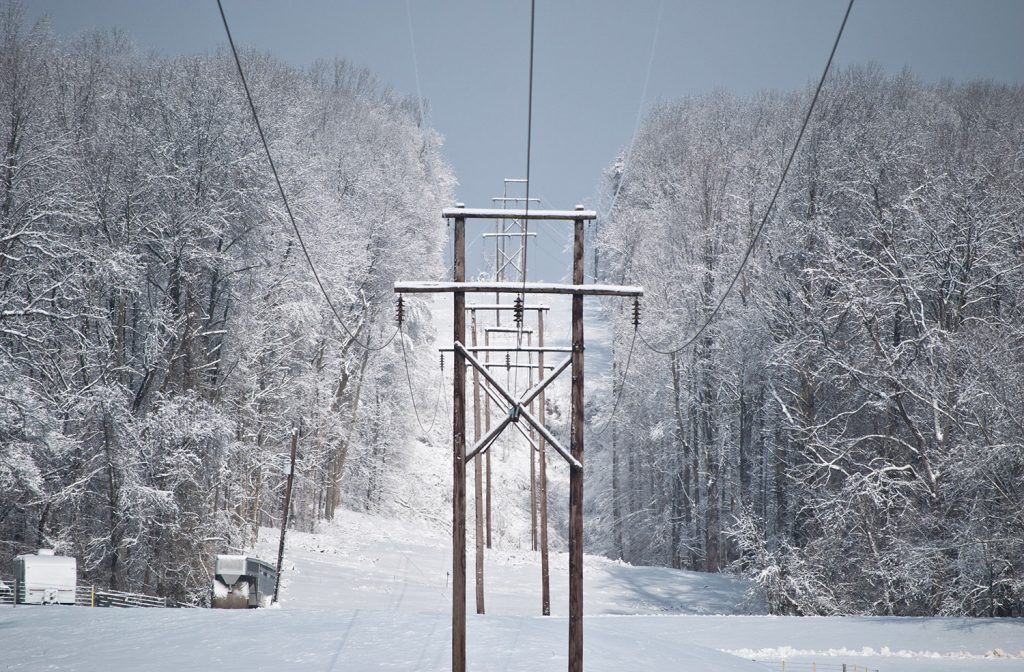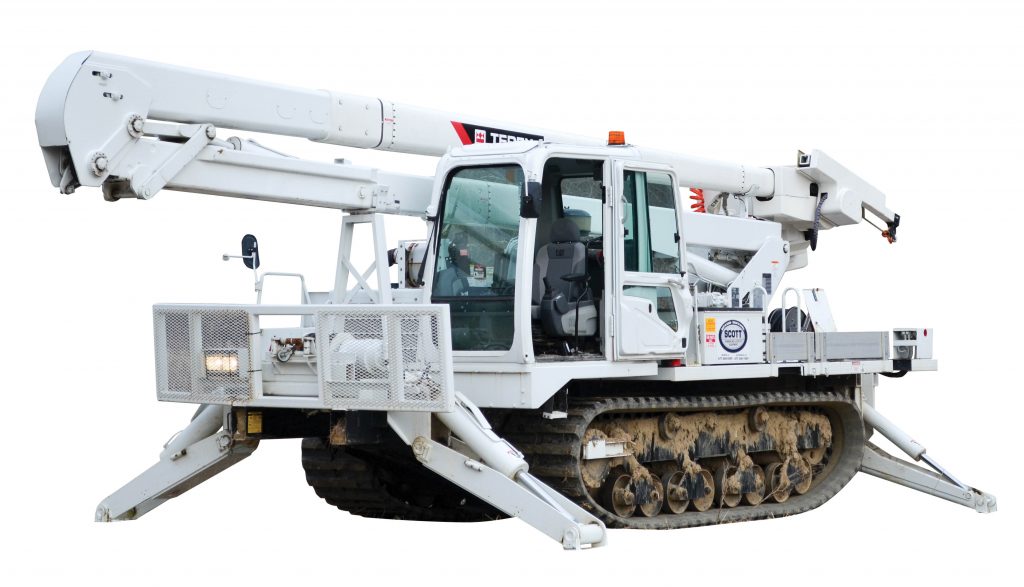
In his 27 years at Hoosier Energy, Line Foreman Mark Richardson has trekked countless hours across the hills and hollers of southern Indiana and Illinois to find downed power lines. Each winter storm comes with its own challenges complicated by cold temperatures and snowfall.
Richardson recalls a rough snowstorm several years ago, when he and another lineworker embarked on foot to find the cause of an outage.
“The snow was probably 10 inches to a foot deep, and we were climbing uphill, downhill — I think I spent more time on my hands and knees than on my feet,” he says. “We walked for probably three or four hours straight, and the snow was blowing so hard. It was dark, and you’d shine the flashlight up and couldn’t even see the line half the time.”
Richardson explains that miles stretch between road crossings, which means lineworkers often have to hike — regardless of the terrain or weather conditions — to find and fix downed lines. “You just have to fight through it and keep going,” he says.
At about daylight, Richardson and a coworker found the culprit power line. “It’s just one of those all-nighters that you don’t expect to happen, but usually does.”
Hoosier Energy crews give their all to maintain the resiliency of the electric grid. When the power goes out, these are the people working to get power restored — even in foot deep snow.
It’s All About Being Prepared
“We’re pretty much prepared for winter all the time, because we’ve got to be,” says Substation Working Foreman Joe Crowe, explaining that crews prepare their four-wheel-drive trucks for winter by putting in diesel additives and make sure all equipment batteries are sufficient.
Being prepared for any weather circumstance or disaster involves having cutting-edge technology and equipment that facilitate and maintain grid resiliency. Hoosier Energy provides lineworkers with all-terrain vehicles and track machines — digger and bucket trucks on tracks that resemble a tank — to make it easier to travel across hazardous properties to find line breaks.




